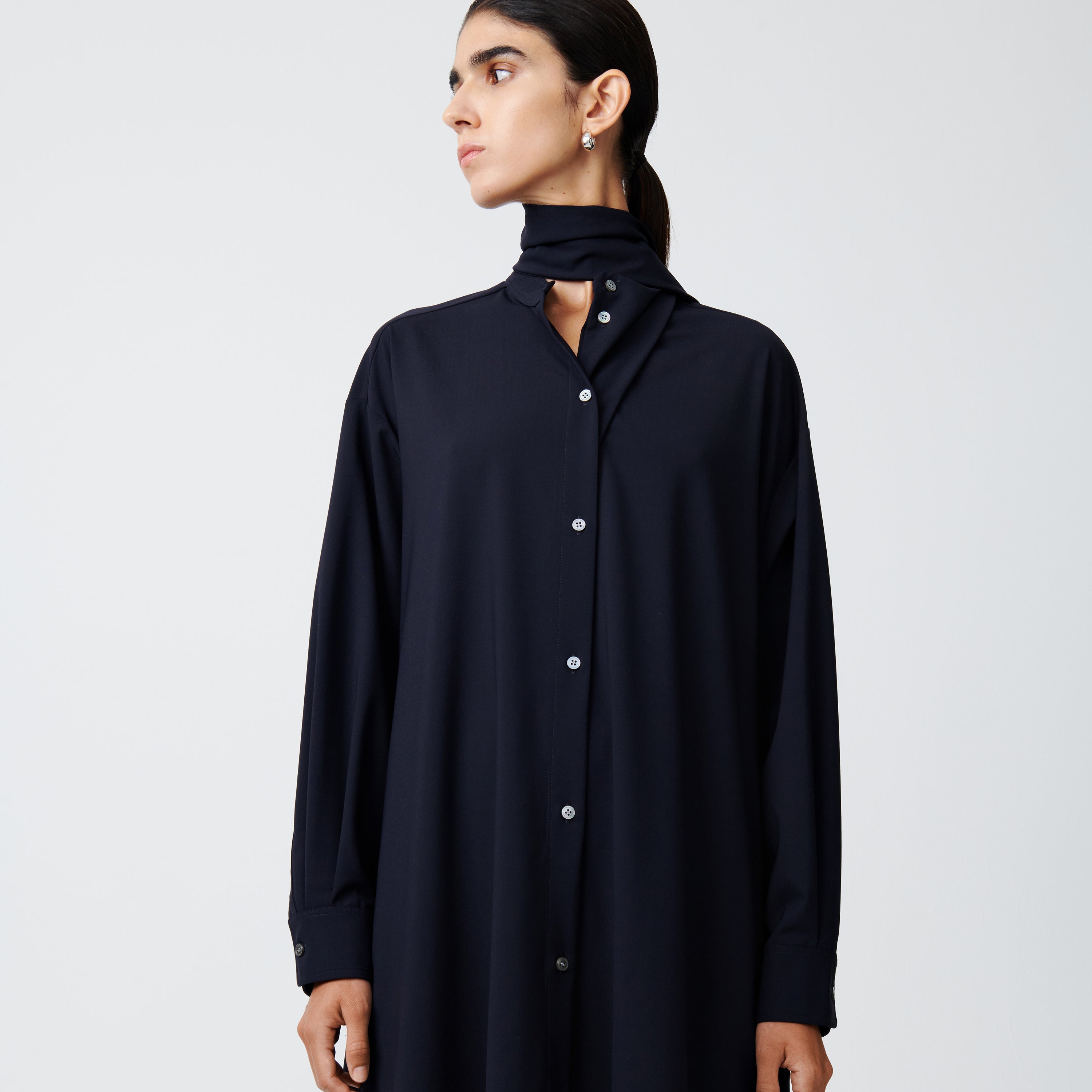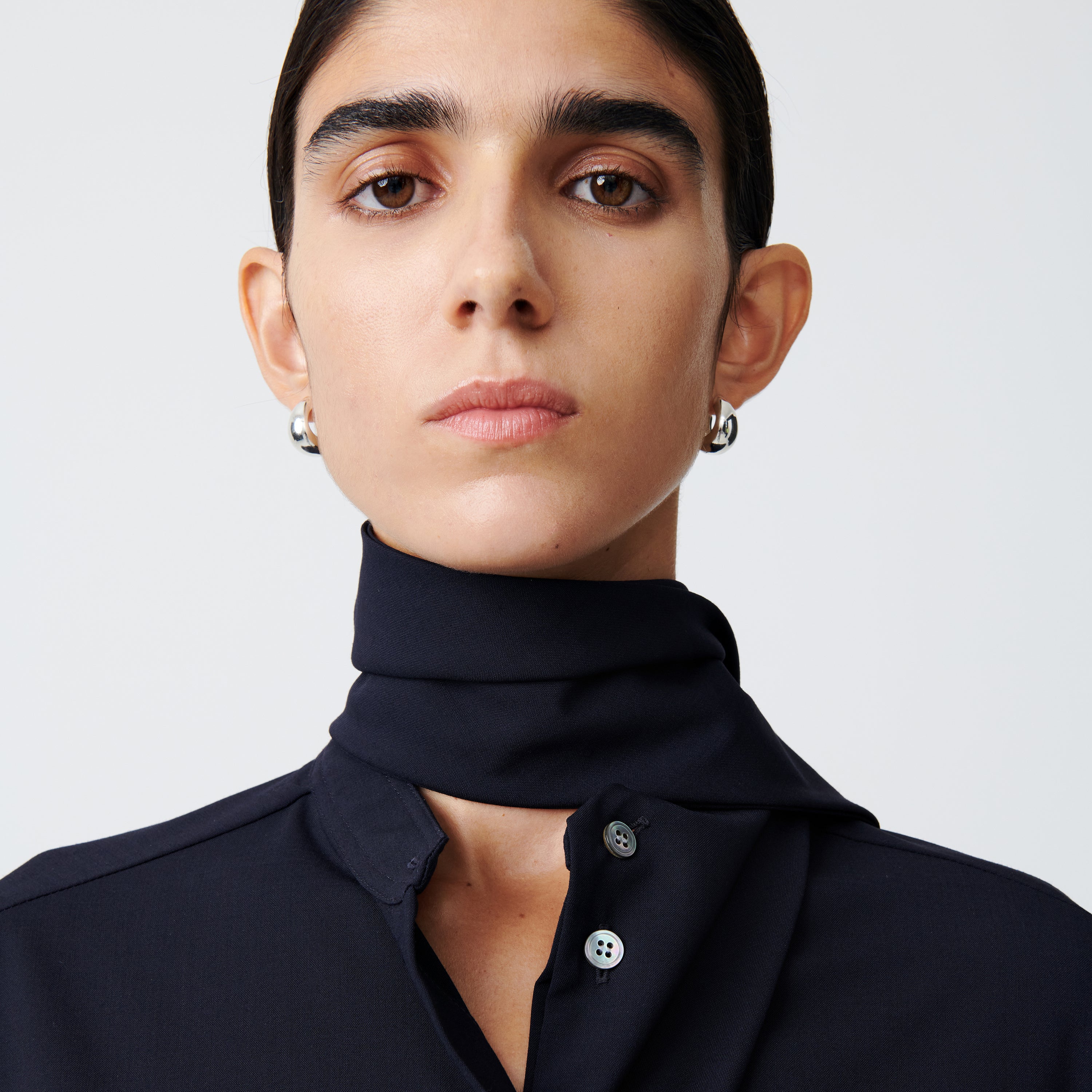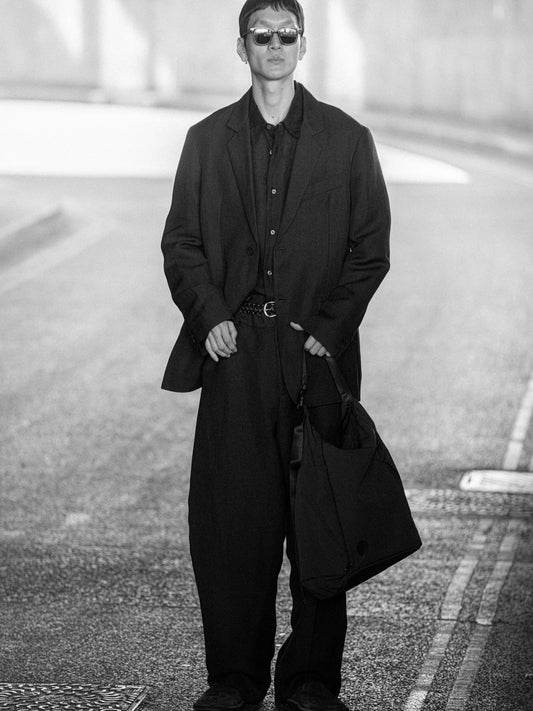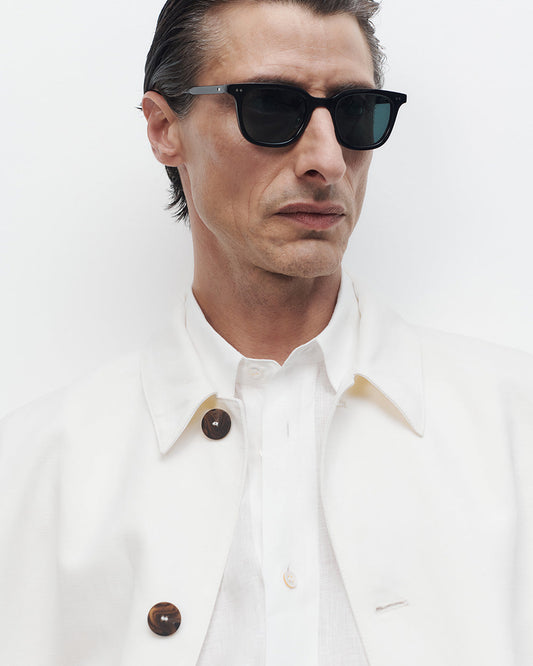In our editorial series, looking at how certain imagery turns creatives on, gallerist Rosa Park shares a mood board that offers insight into the things she likes to look at and how they inform her life and work.
Based in Los Angeles, Park was born in Seoul and has a background in fashion and lifestyle publishing. She studied American History and Marketing in Boston before moving to New York to work in fashion and beauty. Moving to England she completed an MA at Bristol University in English Literature.
Park opened Francis Gallery in 2018 with a space in Bath, England, which was followed by an outpost in L.A in 2022. In Bath this week, Park presents Dutch painter Berend Boorsma and British potter Paul Philp in a new duo exhibition that be will be shown in tandem with an L.A. exhibition later this April, debuting Korean-born painter Jessica Woojung Ghil.
1. Axel [Vervoordt] in the 1980s, on his phone. He is the ultimate master in the field of art and design and having spent time at his place in Antwerp, I credit him as a major reason why I started a gallery. He changed how I interact with art. The way he puts things together: archeological artefacts, alongside a huge Anish Kapoor, a Masters painting, a Korean ceramic. I like his idea that you have your most precious piece of art out and live with it. A lot of people preserve precious things. He is the antithesis of that. Live with it, let it age. To me that's the whole point of life.
2. I encountered American artist Fred Sandback’s work in New York in the early 2000s. He's known for using acrylic yarn, it's string basically, you can get it anywhere. He creates tension, and pulls it, creating vertical lines, diagonal lines. It completely changes how the space looks, feels, and how you move through it. He's an artist that made me think about minimalism. He taught me that simple is not that simple.
3. I haven’t been to Goetheanum [in Dornach, Switzerland, the world centre for the anthroposophical movement] but it’s on my list. It’s HQ for Rudolf Steiner's ideology, which is slightly, or very controversial depending on who you're talking to and which ideologies you take literally. But for me, this is strictly about design. The whole idea, if I'm to over simplify, is that everything is connected. Your house, your body, your furniture, education. Specifically within design, not only is it beautiful, but it has to be comfortable and it has to contribute to your health. A big part of this movement is that it mimics things found in nature and the human body. It's curvaceous and asymmetrical. Sometimes it looks sculpted like a crystal. I just love these shapes. And I've sat in the furniture and it’s freaking comfortable!
4. Hyun-Sook Song is my favourite living Korean painter. She's in her seventies now, she left Korea in the early 1970s, emigrated to Germany. This is the most emotional image I selected and I don’t even know if I can explain the breadth of her influence. But she left Korea before it was developed, before the skyscrapers. Her mother and grandmother grew silkworms. So you see a lot of these thin, veil-like, silky fabric motifs in her work. In her studio there is a photo taken from her farming village of this wooden stick, which I presume is from the 50s or 60s, in a rural setting. What's remarkable about this woman is for the last fifty years she has painted pretty much nothing but this: variations of this wooden pole with a veil-like mystery fabric, and sometimes clay, sometimes earth. It's like you can feel her yearning for something that doesn't exist anymore. It’s also been suggested that repeatedly painting these silk-like fabrics is her way of continuing those traditions of her mother and grandmother. I think for me, it's the fact that she's continuing her lineage on her own terms.
5. This is a fun one. The artist Peter Joseph once told me and my husband: “Look up every time you want to complain about the British weather and appreciate the changeable skies and the light.” My husband - [Rich Stapleton, photographer] started photographing them. We then named our son Turner, after JMW Turner! There’s quite a few artist that depict English skies but our favourite is Turner! [laughs].
6. This photo series of Korean grandmothers by Korean photographer Min Hyun Woo went viral. Korean culture is one that has incredible reverence for older people. It was [shot] in rural parts of Korea, outside of Seoul. He had them dressed up in beautiful Hanbok, which is our traditional garb, carrying flowers. Vogue Korea published them. But just look at how happy she is! My oldest artist is eighty two. And I've got to tell you, lots of people should spend time with those older than them, younger than them too, you need the perspective.
7. The Monet room at Chichu Art Museum at the Benesse Art Site in Naoshima, [the art island of Japan] was a big influence on what we do with art. I had never particularly cared for Monet’s ‘Water Lilies’ to be honest. But when I saw the work there, it blew my mind. It is lit by natural light, the architecture is ingenious - they [architect Tadao Ando] created this room specifically for the art. You take off your shoes and put on slippers. You do not take photos. You go in, and you experience the art. An environment is such a big factor in how you perceive art and this is such a great example of that.
8. Suzan Frecon is a contemporary artist here in America. She taught me colour. I always wonder ‘how come colours come to life so differently for every painter?’ Frecon actually makes me like colours I didn't even think I could like. She said her work is not to be seen, it's to be experienced. And she doesn't prescribe any meaning to her works. I love that open ended-ness.
9. I love this very famous photo of Lucie Rie by Lord Snowdon. There she is, with this big moon jar gifted to her by Bernard Leich [potter] in the late 40s as a sign of friendship. It was at her studio until she died and is now part of the British Museum collection! Going back to the Korean-ness of it all, I know Korea is having such a moment right now but it really was a place with a checkered history. It was poor and war torn. Our culture was not valued. Leich bought the moon jar in the 30s when he was in Korea. Now, all potters know what a moon jar is, it's this purity of form; it’s almost like part of your education as a potter to make a moon jar. But no one even knows who made this moon jar which I think is hilarious. Leich acquires it, brings it back to England, gives it to Rie, she gets photographed by an aristo and it ends up in the British Museum! For me, it's so meaningful as a Korean woman, my ancestors are from there as far back as you can trace my lineage, that this humble pot had the power to move so many influential, powerful people. That reaffirms for me, and gives me that confidence, that our history, our culture, our crafts, are powerful and impactful. And always have been.
10. Tantric drawings are an obsession of mine. A lot of it comes from India. It's anonymous, often on found scraps of old paper. They feature very simple geometric shapes, or symbols of cosmology like spirals, a universe, stars. You can see the influence of this on Hilma af Klint, Agnes Martin. I am deeply spiritual. I'm not Buddhist but I do meditate. I love that for these drawings, it's not about the person or the final outcome, it's about the process of creating during meditation.
11. Michael Heizer’s work, such as ‘City’ [monumental sculptural in the Nevada desert] I've looked up to for a while. I love American land artists. I think that's a whole category that is mind boggling. The scale at which these artists operate, like Walter De Maria’s ‘Lighting Field.’ Can you imagine the state ‘City’ will be in five hundred years from now? He started it in his twenties and finished in his seventies, it's a 50 year undertaking! Most importantly, the reason I included Heizer is because the things that really inspire me are people who make me look at art and my life differently. And he definitely does.






